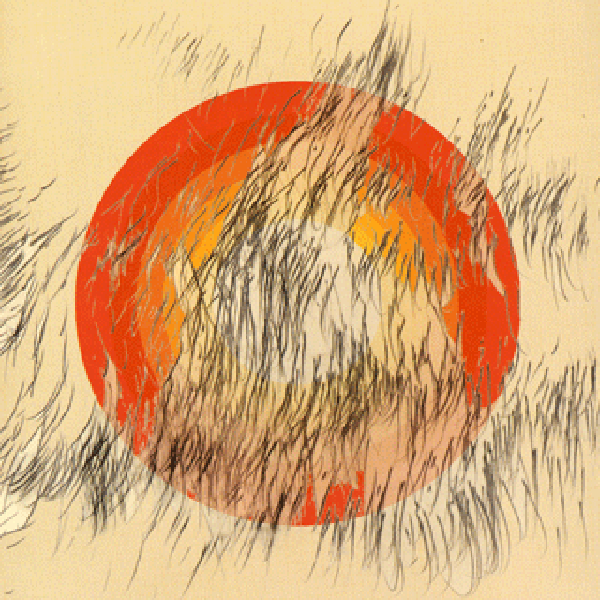
by Ian Mann
September 20, 2006
/ ALBUM
Although it is clearly structured it should still appeal to avant garde/free improvisation fans and most adventurous listeners should find something to enjoy here.
This strangely titled record is the latest album by the remarkable musical maverick Oren Marshall. Marshall is a tuba player. Yes the tuba, the comic, lumbering, lugubrious tuba. Hands up all those who remember the novelty song “Tubby The Tuba” from their childhood. This record is played entirely on the tuba. There are no other musicians involved - and no other instruments. It doesn’t sound as if it should work does it? Yet in the hands of a visionary virtuoso like Marshall the tuba becomes an instrument of surprise, delight and even beauty.
On this amazing tour de force for the tuba Marshall has expanded the sound of the instrument almost beyond recognition. He makes extensive use of electronics distorting the sound of the instrument by the use of fuzz tone and wah wah foot pedals, tape loops, delay units and all manner of gadgetry. At one point he even links five tubas together with a piece of rubber pipe so that he is able to play them all simultaneously. However there is an underlying musicality in Marshall’s writing and playing that prevents all this from being merely of curiosity or novelty value.
” The Story Of Spedy Sponda” is a suite in seven movements, inspired by a dream, tracing its character’s journey to enlightenment. It was originally commissioned by the Women’s Playhouse Trust in 2002 and funded by the Jerwood Foundation. The Foundation’s support for British Jazz has been invaluable particularly the Jerwood Rising Stars programme at Cheltenham Jazz Festival which has been of tremendous benefit to so many musicians.
Marshall has performed “Spedy Sponda” live on numerous occasions including a concert broadcast on Jazz On Three and he has twice been nominated for the BBC Innovation In Jazz Award.
The first movement of the suite showcases the acoustic elements of the tuba with electronic embellishment being used sparingly. After a brisk fanfare highlighting the instruments rhythmic and tonal capabilities the music drifts into a haunting dreamlike sequence that mixes the pastoral with the ambient. Marshall’s rich round tones unfold around a gently undulating electronic landscape. It is all quietly beautiful.
Movement two comes as something of a shock to the system as Marshall unleashes an arsenal of electronic effects. Much of this sounds a like a highly distorted electric guitar as Marshall makes use of his foot pedals. The whole thing is underpinned by a more traditional rhythmic tuba vamp.
When asked to describe his music Marshall replied ” a contemporary classical ambient space heavy metal experimental improvised folk blues”. This sounds like the kind of line Donald Fagen and Walter Becker would use to wind up gullible music journalists, but hang on he’s right. ALL those elements are here on this album. Movement two is heavy metal tuba blues and is a hugely enjoyable piece with some killer riffs. Rock fans would love it. Just don’t tell them that it’s actually a tuba making that glorious racket.
Movement three is a brief interlude of funereal bass tuba notes over distant echoing voices, which segues quietly into the next movement.
Here Marshall gradually re-introduces electronic elements and the music begins to bubble and simmer before erupting into a cauldron of white noise. Things then subside again as the electronics veer off into space with sounds reminiscent of 1970’s Kraut Rock. There is a real sense of isolation, of being lost in space, of floating in the void.
Movement five is played on the five tubas connected by the rubber pipe. A “tubascape” as it has been described. There are percussive effects, almost impossibly low bass notes and still that sense of isolation, of trying to be heard in the emptiness.
The pulsing riffs and vamps of Movement six return us to earth as Marshall makes full use of the wah wah pedal to improvise over a hypnotic, pulsing loop. The pulse continues into the final movement providing the base on which Marshall’s rich acoustic sound brings the album to a suitably elegiac close.
This really is an astonishing record. The nimbleness of the playing and the inventiveness of the writing and improvising are quite outstanding. He totally transcends the limitations of his instrument and there is always something of interest for the listener. Each movement has it’s own distinct musical character and it is obvious that Marshall is a unique musical talent with a wilful off the wall eccentricity reminiscent of Django Bates or Carla Bley.
Having said that this is not a record for everybody but anyone with an interest in cutting edge jazz should try to hear it. Although it is clearly structured it should still appeal to avant garde/free improvisation fans and most adventurous listeners should find something to enjoy here.
In a live context I’ve only seen Marshall in the bands of others where he has functioned mainly as an ensemble player and the chance to really air his talents has been brief. He did produce a spectacularly quirky solo when I saw him with Dave O’Higgins’ Big Band sometime ago. I subsequently saw him with John Taylor’s Big Band where he showed his versatility by appearing on trombone. I would certainly like to see him perform “Spedy Sponda” live which should be an interesting musical experience. His duo gigs with percussionist Maurizio Ravalico should also be well worth seeing.
blog comments powered by Disqus